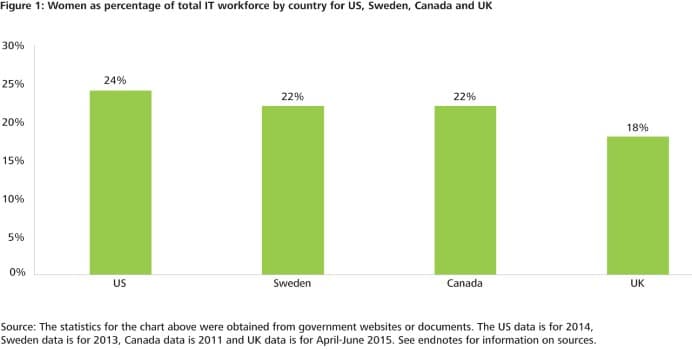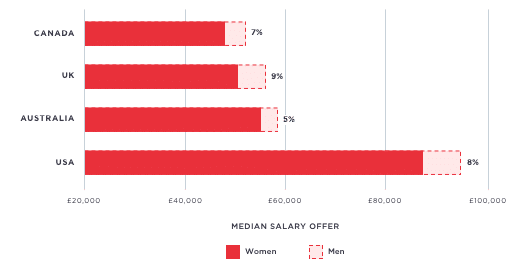Women In Technology
Theresa May has described the Technology Sector as a “great British success story” – Telegraph 2017.
The technology sector, which is growing twice as fast as the UK economy now contributes around £97bn a year, up 30% in five years, according to the Third Annual Tech Nation Report – Telegraph 2017.
Despite this, gender imbalance is still an issue in the IT sector. Deloitte reported that with 1.2 million IT posts, the percentage of women in IT jobs has only increased by 0.05% from 17% to 18% between 2010 to 2015. Whereas in contrast, the total number of IT jobs increased by over 20% within that 5-year period – (Deloitte Report – Technology Media & Telecommunications Predictions, 2016).

So Why Are Fewer Women Working In IT?
Education
Higher Education Statistics Agency 2015, reported that in 2013-2014, only 17.1% of Computer Science were women and this is lower than female participation in higher education in the UK, which sits at 56%.
Deloitte 2016 also noted the issue of fewer women studying Computer Science isn’t only a UK problem. It’s a global issue, other countries such as Canada, the US and Sweden also face. It’s important to note that not every person working in IT studied Computer Science or a similar field. Nevertheless, the issue of gender imbalance in IT begins at the grassroots – in School and University.
Recruiting
According to figures from an IT Recruitment company Technojobs, 91% of UK Tech employers said that only 5% of IT applicants were women – Silicon 2014. So why are fewer women applying for IT roles? Technojobs said that 62% of the women surveyed felt that the Tech industry is seen to be a male-dominated industry and thus is to blame for fewer women applying for IT jobs.
Hiring
Studies have shown that both men and women are twice as likely to hire a man for an IT job than an equally qualified woman – Deloitte 2016.
Retaining
Retaining Women in IT jobs is a big issue. Research shows that women in IT roles are 45% more likely than men to leave within the first year according to a US study – The Washington Post 2016. In one study, 27% of women cited discomfort in their work environment due to overt or implicit discrimination as a factor in why they left their IT job – INC. 2014.
Paying And Promoting
Women working in IT in the UK earn 9% less than their male counterparts in the same job and are losing around £5,000 per year. These figures are based on 10,000 job offers made on Hired.com, a startup specialising in tech recruitment – City A.M, 2016.

According to research conducted by a global IT recruiter Spring Technology, the UK’s largest technology staffing provider, 37% of women in IT have said that they’ve been passed over for promotion because of their gender – HR Magazine 2015.
Consequently, this filters through to fewer women at the top of the ladder. In the UK, only 9% of Women in IT are in Senior roles – Deloitte 2016. This further supports a report published by the research firm Gartner on Chief Information Officers (CIOs). They reported that only 14% CIOs are female and that figure has remained the same for the last 10 years.
Final Thoughts
To celebrate Gender Diversity at Zaizi, we’ve interviewed two Women in Senior roles to share what it’s like to be a woman working in IT. Christiana Thalayasingam is a Senior Software QA Engineer and Ana Sirvent is Senior Technical Lead.
We wanted to know why they chose a career in IT, what they would like to share with other Women who may be thinking of starting a career in IT, and finally why they chose to work for Zaizi.
